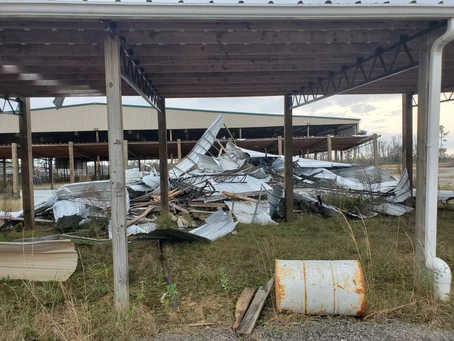Additional aid is coming to the Florida Panhandle to help with long-term recovery following Hurricane Michael! Well, at least it’s almost here. With the recent release of federal guidelines the clock is now ticking for the Florida Department of Economic Opportunity to create a plan that will guide how the $735 million in Community Development Block Grant – Disaster Recovery (CDBG-DR) dollars will be spent to address unmet needs in communities impacted by Hurricane Michael. However, it will still be months before these dollars are available to communities and likely a year or so before we can see change on the ground. This is due to a long drawn out federal process that we’ll save for another post. Even though it may be months before the funding is available – NOW is the time to begin to tee up your projects so that your community doesn’t miss out.
Take a lesson from of our neighbors in South Florida who were impacted by Hurricane Irma just a year earlier. Local government grant application cycles for CDBG-DR were short (in some cases a month to six weeks!) for large-scale projects that typically take months to prepare. Here are some things you can do now to make sure you are ready to roll when the grant cycle opens.
- Get a plan. Competitive projects are connected to a larger vision for the community. This may mean a long-term recovery plan or the Countywide Local Mitigation Strategy. If the project meets the criteria for the LMS and is not currently in the plan, it’s a good idea to get it added now.
- Find out where your low- and moderate income communities are located. At least 70 percent of the $735 million ($514.5 million) must be spent in these areas. Therefore, while not required it is best to target these areas for projects where possible. A low- to moderate-income area is a defined area where at least 51 percent of the households are at or below 80 percent of the area median income level set by the U.S. Department of Housing and Urban Development (HUD). You can find out what this limit is for your community on the HUD website. In addition, there is an interactive map that can help you locate these areas.
- Knock out steps to make your project shovel ready. There are time limits on spending CDBG-DR dollars so projects that are ready to go will often score higher. Do you have site control? Is zoning in place and does your community support the idea? If you answered no to these questions, you have time to work on this now.
We’ve created a short guide to help communities evaluate potential projects based on basic CDBG-DR requirements in advance of the release of official guidance from DEO. It is not a list of the full grant requirements but can be a good place to start when brainstorming ideas. Check it out here.
Out of disasters, come opportunities. We look forward to seeing what is on the horizon for our home, the Florida Panhandle!

